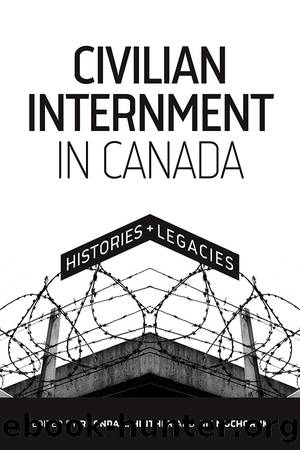Civilian Internment in Canada by Rhonda L. Hinther

Author:Rhonda L. Hinther
Language: eng
Format: epub
Publisher: University of Manitoba Press
Published: 2020-02-22T18:17:17+00:00
CHAPTER 11
Japanese Canadian Internment: A Personal Account
GRACE EIKO THOMSON
My name is Grace (née Eiko Nishikihama) Thomson. I was born at the Japanese Fishermen’s Hospital, in Steveston, British Columbia, to Japanese immigrant parents.
The following is a personal account of the Japanese Canadian internment (1942–49). It is therefore limited to my own experiences of internment, and its effects on my life. I include some of my mother’s memories of these years (taken from her memoir, written within the last five years of her life, which she left with me to translate for family members). My research into this subject tells me that each individual’s stories of the internment and dispersal years vary according to the age at which the speaker experienced these events. I was in grade two and attending Lord Strathcona Elementary School, in East Vancouver, at the time our lives were disrupted. My own and my family’s experiences of these years dictated how we lived then, and continues to direct how I live even now.
I had no option to attend university after graduating high school, as my parents struggled to resettle in the city of Winnipeg, after restrictions on the movement of Japanese Canadians were lifted 1 April 1949. And so I attended Success Business College evening classes and began working as a stenographer, then as a legal secretary, to assist my parents in the purchase of a home that we could finally call our own.
In the late 1960s, as issues of identity continued to fester inside of me, and still not able to shake off the memories of internment, I began, with some trepidation, to study. Beginning in 1970, at University of Winnipeg, I began taking evening classes focused particularly on history and political studies, and as my sons grew older I registered full time at University of Manitoba School of Art (BFA, honours, 1973–77); then at the University of British Columbia (1980–82) I entered a graduate studies program in Asian art history to investigate my Asian/Japanese cultural roots.
My professional career began in 1983 when I was hired as assistant director/curator of University of Manitoba School of Art Gallery where for seven years I curated exhibitions focused mainly on Manitoba artists. During this time, however, I was offered an eye-opening experience that forced me to face reality, beyond my own life as a Canadian. I was asked to act as an advisor to Inuit printmakers of the Sanavik Co-operative, at Baker Lake, Northwest Territories. In this role I would fly 1,500 miles due north of Winnipeg, about three times a year, spending a few days each time advising on image choices for the co-op’s annual production, and meeting with the Canadian Eskimo Arts Council, which juried the annual collection. In meeting the Inuit artists and their families, I realized that while a major industry of Inuit art was already flourishing in the south, the northern artists and their families were living in relative poverty.
In 1990, with the Redress (1988) compensation in hand, I took a sabbatical from the University of Manitoba.
Download
This site does not store any files on its server. We only index and link to content provided by other sites. Please contact the content providers to delete copyright contents if any and email us, we'll remove relevant links or contents immediately.
| Arms Control | Diplomacy |
| Security | Trades & Tariffs |
| Treaties | African |
| Asian | Australian & Oceanian |
| Canadian | Caribbean & Latin American |
| European | Middle Eastern |
| Russian & Former Soviet Union |
The Secret History by Donna Tartt(16627)
The Social Justice Warrior Handbook by Lisa De Pasquale(11489)
Thirteen Reasons Why by Jay Asher(7788)
This Is How You Lose Her by Junot Diaz(5774)
Weapons of Math Destruction by Cathy O'Neil(5038)
Zero to One by Peter Thiel(4824)
The Myth of the Strong Leader by Archie Brown(4789)
Promise Me, Dad by Joe Biden(4449)
Beartown by Fredrik Backman(4419)
Stone's Rules by Roger Stone(4416)
How Democracies Die by Steven Levitsky & Daniel Ziblatt(4399)
The Fire Next Time by James Baldwin(4343)
100 Deadly Skills by Clint Emerson(4079)
A Higher Loyalty: Truth, Lies, and Leadership by James Comey(4033)
Rise and Kill First by Ronen Bergman(4012)
The David Icke Guide to the Global Conspiracy (and how to end it) by David Icke(3883)
The Farm by Tom Rob Smith(3872)
Secrecy World by Jake Bernstein(3783)
The Doomsday Machine by Daniel Ellsberg(3731)
